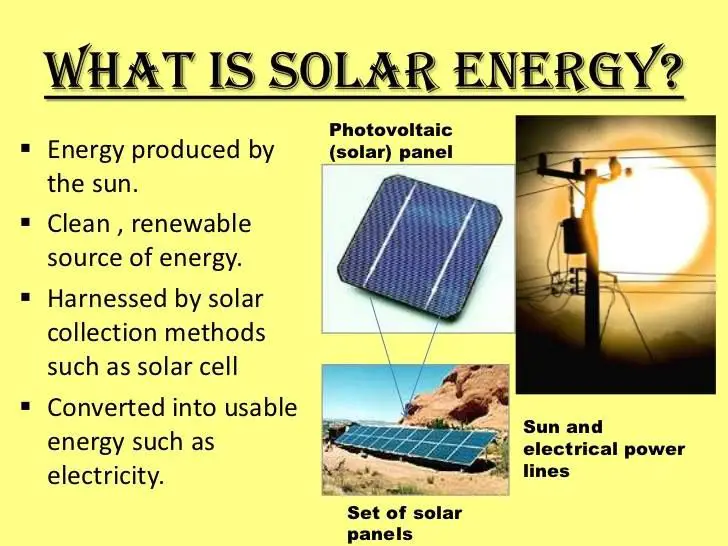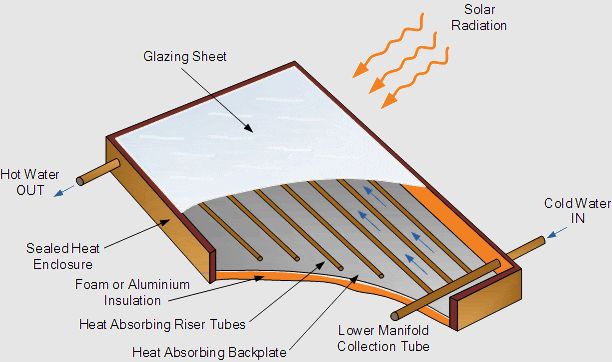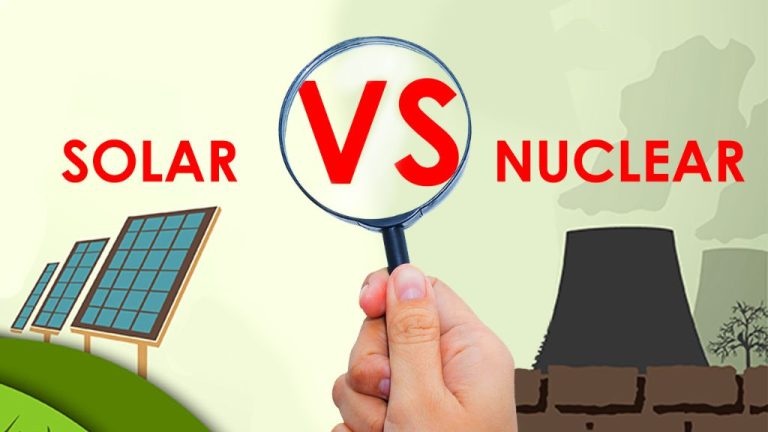What Energy Is The Most Abundant Renewable Energy?
Renewable energy comes from natural sources that are constantly replenished, such as sunlight, wind, water, and geothermal heat. Using renewable energy is crucial to combating climate change and transitioning away from finite fossil fuels. The most abundant renewable energy sources with the largest technical potential are solar, wind, hydropower, and geothermal energy.
Renewable energy will be instrumental in creating a clean energy future. Understanding the most plentiful renewable resources allows us to focus infrastructure and technology investments in the most impactful areas. This analysis examines the leading renewable energy types and compares their current and potential global energy contributions.
Solar Energy
Solar energy is the conversion of the sun’s radiation into usable light, heat, and electricity. Solar technologies capture sunlight and convert it into thermal or electrical energy that can be used immediately or stored for later use. There are two main types of solar energy technologies:
Photovoltaic (PV) systems use solar cells made from silicon or other materials to convert sunlight directly into electricity. PV systems range from small residential rooftop systems to large utility-scale solar power plants. The electricity generated can be used to power homes, buildings, and feed into the grid.
Concentrating solar power (CSP) systems use mirrors to focus sunlight and convert it into high temperatures to heat fluids or generate steam to drive turbine generators. CSP allows for thermal energy storage, letting it dispatch power when needed.
The pros of solar is that it is renewable, abundant, and emissions-free. Once installed, solar panels can generate electricity for decades with little maintenance or intervention. Solar energy systems are modular and can be installed almost anywhere. Declining costs and efficiencies are making solar more competitive and popular globally. The cons are that solar is variable, relying on sunny weather. Energy storage is needed to provide power when the sun isn’t shining. Large-scale solar farms require significant land area. The manufacturing supply chain for components like panels relies on raw materials that need mining.
Wind Energy
Wind energy harnesses the kinetic energy of moving air to generate electricity using wind turbines. As wind blows across the blades of the turbine, the kinetic energy causes the blades to rotate. This rotation turns a shaft connected to a generator which converts the mechanical energy into electrical energy.
Wind power has several advantages. It is a clean and renewable source of energy that does not produce any emissions. Wind turbines can also be built on land or offshore in bodies of water. In addition, wind energy is cost-competitive with fossil fuels in many locations. The main disadvantages are that wind power can be intermittent as it relies on the weather, and wind turbines may impact wildlife or be considered an eyesore.
Overall, wind energy is one of the most scalable and widely used forms of renewable energy. As of 2021, wind power accounted for around 8.7% of total U.S. electricity generation. With the right locations and technology improvements, wind has the potential to generate large amounts of electricity to power homes and businesses.
Hydropower
Hydropower is energy generated from moving water. It relies on the water cycle, where water evaporates, forms clouds, precipitates, and flows down to the ocean through rivers and streams. Hydropower uses this natural movement of water to produce electricity.
Most hydropower is generated using dams, where a dam is constructed on a large river to create a reservoir. Water in the reservoir has potential energy because of its height above the river below. This water is allowed to fall through pipes called penstocks, spinning turbines at the bottom to activate generators and produce electricity.
The pros of hydropower include its renewable nature, low operating costs once built, and ability to quickly adjust output to meet demand. The cons are its reliance on suitable geographical locations, large upfront costs, and potential environmental impacts on rivers and wildlife.
Overall, hydropower is a major renewable energy source worldwide, providing around 16% of global electricity generation. It offers a reliable and flexible way to harness the natural movement of water for clean energy production.
Geothermal Energy
Geothermal energy is heat derived from the inner layers of the Earth. It is considered a renewable energy source because the heat emanating from deep within the Earth is constantly replenished.
There are several forms of geothermal energy that can be harnessed for power generation and direct heating applications:
- Hydrothermal resources require both heat and water. Hot water or steam from reservoirs under the Earth’s surface can be piped directly to facilities to generate electricity.
- Enhanced geothermal systems (EGS) inject water into hot rocks under high pressure to create a geothermal reservoir that can be tapped for energy production.
- Direct geothermal heating uses heat pumps to draw warmth from shallow ground temperatures for space and water heating in buildings.
Some key pros of geothermal energy:
- It is a clean, renewable baseload source of energy with minimal carbon emissions.
- Geothermal plants have high capacity factors as they can generate power consistently.
- The energy source is always available and not subject to weather fluctuations.
- Geothermal heating and cooling is highly efficient for buildings.
Some potential cons include:
- High upfront capital costs for geothermal power plants.
- Limited to geographical areas with good subsurface heat and water resources.
- Can involve induced seismicity from fracturing underground rock.
- Heat extraction can deplete reservoirs over time.
Bioenergy
Bioenergy is renewable energy made from organic matter called biomass. Biomass is any biological material that can be used as fuel, including plants, trees, algae, crops, waste wood, and even garbage. The most common forms of bioenergy are:
- Wood and wood processing wastes – sawdust, bark, wood chips, wood pellets
- Agricultural crops and waste – corn, sugarcane, soybeans, straw, manure
- Food, yard, and municipal waste – household garbage, paper, grass clippings
- Algae – microorganisms that can be grown and harvested in water
There are multiple ways to produce bioenergy from biomass:
- Direct combustion – burning biomass directly for heat
- Thermal conversion – heat and pressure used to create liquid biofuels like biodiesel and ethanol
- Biochemical conversion – biological and chemical processes using bacteria to create biogas like methane
The main pros of bioenergy are:
- Renewable – biomass can be replanted and reused.
- Reduced landfill waste – organic waste can be repurposed for energy.
- Lower emissions than fossil fuels when created sustainably.
- Can be made domestically to support local economies.
The cons are:
- Can disrupt food supplies and increase food prices if using crops for fuel.
- Requires land and resources to grow biomass feedstocks.
- Emits carbon when burned like fossil fuels.
- More expensive than conventional energy.
Overall, bioenergy provides a renewable alternative to fossil fuels but requires careful management of land, water, and feedstock resources.
Comparing Abundance
While solar, wind, hydropower, geothermal and bioenergy are all renewable sources of energy, their potential and utilization vary greatly. In terms of potential, solar energy far exceeds the others. The amount of solar energy striking the Earth’s surface each year is more than 10,000 times the world’s total energy use. However, only a tiny fraction of this is currently utilized, around 25%. Wind has vast untapped potential source globally with current utilization under 2%.
For hydropower, the technical potential is estimated at about 16,000 TWh/year but only around 25% has been developed so far. Geothermal energy has tremendous potential but is only utilizing a negligible amount currently. Bioenergy from plant materials makes up the biggest share of renewable energy used today but is constrained by limits on suitable land area and water availability. While the potentials vary greatly, all these renewable sources have enormous room for growth versus current use.
Challenges
While renewable energy sources hold great potential, there are still challenges and limitations to overcome in scaling them up to meet global energy demands. Some key challenges include:
Intermittency: Many renewables like solar and wind are weather-dependent and generate electricity intermittently. This requires integration with energy storage and backup power sources.
Transmission infrastructure: Renewables are often located far from population centers and require major investments in transmission lines to transport the electricity.
Storage technology: Effective and affordable grid-scale energy storage is needed to store surplus renewable electricity for when the sun isn’t shining or wind isn’t blowing.
High upfront costs: The upfront capital costs of building large-scale renewable power plants can be very high, despite decreasing costs of renewables in recent years.
Policy and regulatory issues: Barriers like fossil fuel subsidies, regulatory hurdles, and lack of political will can hamper the growth of renewables in many regions.
Competing land use: Scaling up renewables requires large amounts of land which could compete with other uses like agriculture and conservation.
Overcoming these challenges will require continued technological innovation, policy support, and large investments to transition the world’s energy infrastructure to run primarily on renewable sources.
Future Outlook
The future looks bright for renewable energy, with major growth and innovation on the horizon. Most experts project that renewables will continue to expand their share of global energy production as costs continue to fall and new technologies emerge.
Solar and wind energy are expected to lead growth, with capacity doubling over the next decade. Advances in solar panel efficiency, energy storage solutions, and smart grids will enable greater adoption of these intermittent resources. Floating solar farms and agrivoltaics could further boost solar capacity.
For hydropower, new turbine designs and low-head systems could open up additional capacity from lower water flows. Pumped storage hydropower can also help balance variable renewables. Ocean energy technologies like tidal, wave, and thermal energy may see commercialization.
Geothermal can grow through enhanced geothermal systems, co-production with oil drilling, and exploration of unconventional resources. Bioenergy production can expand through next-gen biofuels, agricultural waste biomass, and potentially algae-based fuels.
Overall, continued tech advances, falling costs, supportive policies, and rising energy demands should allow renewables to play a major and growing role in the global energy landscape this century.
Conclusion
In summary, solar energy is the most abundant renewable energy source available. While renewable options like wind, hydropower, geothermal and bioenergy offer significant potential, the amount of solar energy that reaches the Earth’s surface far exceeds other sources.
Some key takeaways:
- The sun provides more energy to the Earth in one hour than the world uses in an entire year. Solar energy’s theoretical potential is enormous.
- Solar PV capacity has expanded rapidly in recent years as costs have declined. Solar energy has huge room for growth in the future.
- Challenges remain in terms of energy storage and overcoming intermittency, but solar offers major environmental benefits.
- Expanding renewable energy, with an emphasis on solar, will be crucial for transitioning away from fossil fuels and combating climate change.
In conclusion, solar power has the greatest potential to provide abundant clean energy far into the future. Harnessing the full capabilities of solar energy will require further technological improvements, supportive policies, and large infrastructure investments, but the possibilities are limitless.






